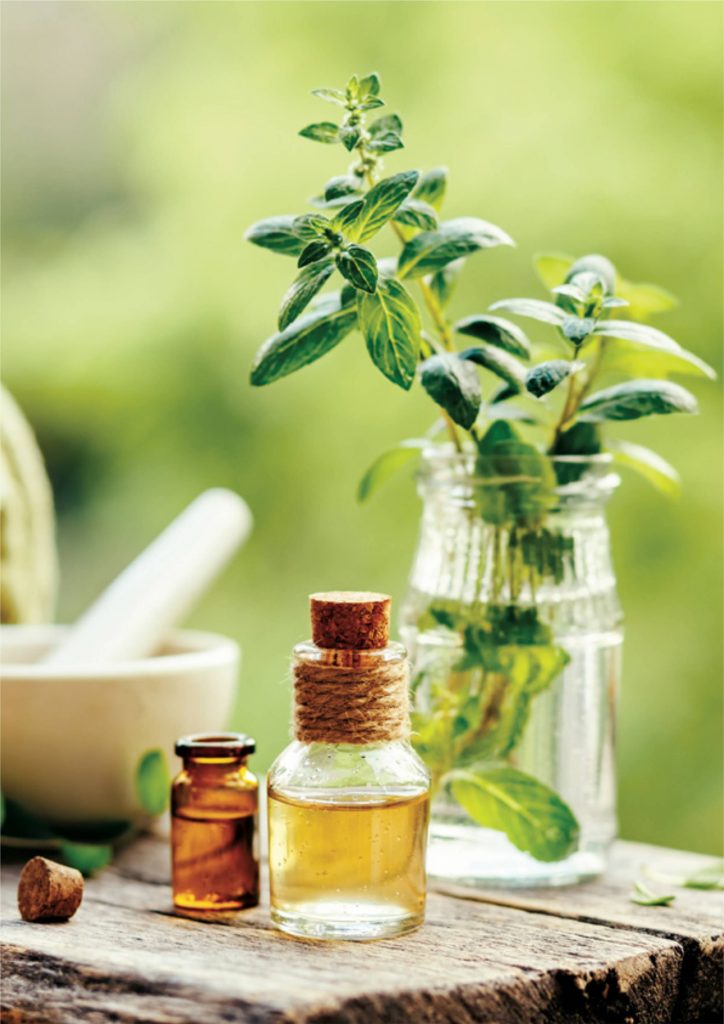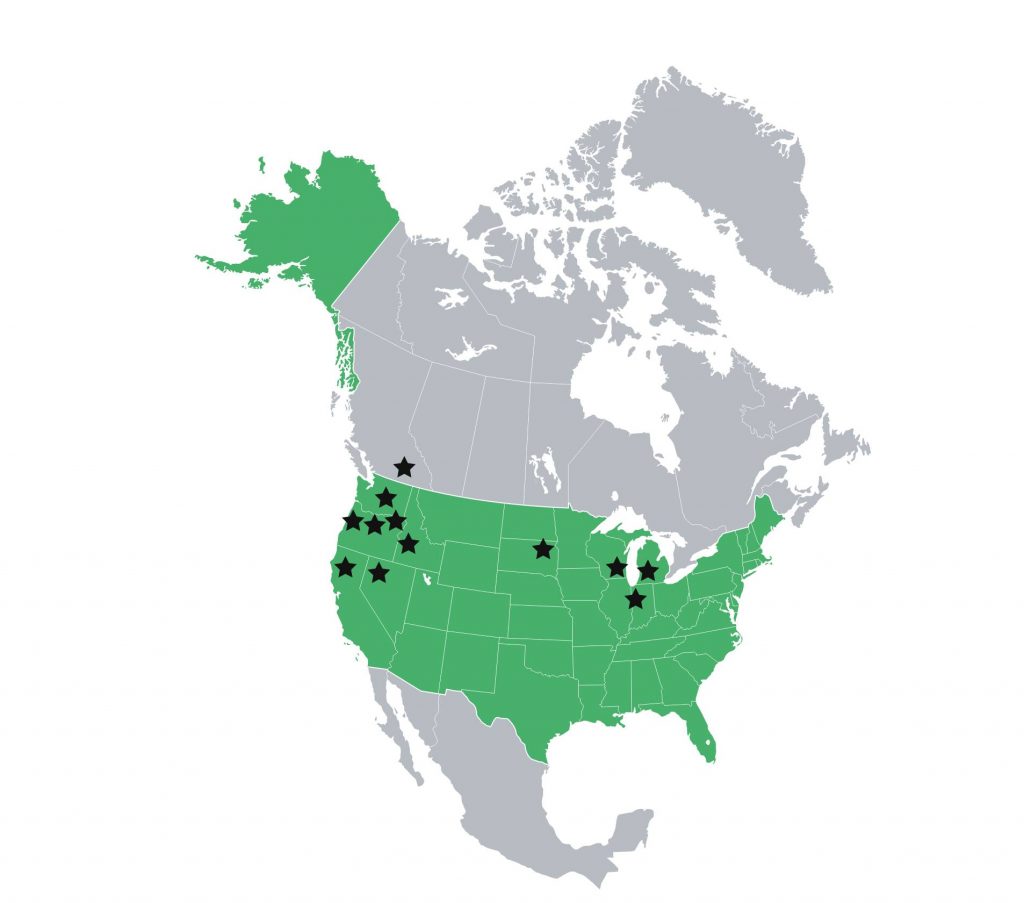Minty Moments – Dive Into The Mint Story July 13, 2019
The sun’s in its element, and it’s the time to reach out for that mint-laced summer drink or health-boosting salads. Have you ever wondered what gives them their shivery fresh piquancy? Yes, it’s those little green, crunchy mint leaves that really hit the spot and are popular the world over for their refreshing aroma and cooling sensation. Today we retrace mint’s steps from the shelf back to the soil.
 Mint oil is generally not available off the shelves but you’ll find it everywhere and it’s one of the world’s most popular flavours. Almost everything on the supermarket shelves, from dentifrices and oral care, dermal and cosmetic products, confectionery, desserts, chocolates, perfumes and aromatherapy ingredients, and sometimes even household cleaners, contain mint oil.
Mint oil is generally not available off the shelves but you’ll find it everywhere and it’s one of the world’s most popular flavours. Almost everything on the supermarket shelves, from dentifrices and oral care, dermal and cosmetic products, confectionery, desserts, chocolates, perfumes and aromatherapy ingredients, and sometimes even household cleaners, contain mint oil.
Mint taxonomy is highly complex and, most often, there is no consensus on the 600 different kinds from the Labiatae plant family. However, everyone unanimously agrees that abounding anti-microbial, antiviral properties, and its countless benefits promote body, mind and overall wellness. It also works as a pain reliever, strong antioxidant, anti-allergenic, and displays anti-tumour and chemopreventive behaviour. Several pharmacopoeias of European and Asian cultures mention mint and its benefits. The flowers, leaves, and even stems have widespread use as herbal infusions and fresh culinary herbs. Commercially produced mint oil comprises two primary varieties, Mentha piperita and Mentha arvensis. Mint oil from M.piperita is usually regarded as the “true” peppermint oil, and unless specifically stated, this is the oil that is discussed in more detail below. Meanwhile, mint oil from M.arvensis is more commonly referred to as cornmint or M.arvensis oil. India dominates production of cornmint oil, with annual output invariably in excess of 30,000 tonnes. A large proportion of the crude mint oil from M.arvensis is further processed into menthol crystals and dementholised mint oil. Spearmint oil as we know it, refers to two distinct commercial varieties, Mentha spicata or native spearmint and Mentha cardiaca or Scotch spearmint.

Almost everything on the supermarket shelves, from dentifrices and oral care, dermal and cosmetic products, confectionery, desserts, chocolates, perfumes and aromatherapy ingredients, and sometimes even household cleaners, contain mint oil.
THE USA PERSPECTIVE
The USA commands the lion’s share (over 60%) of the world’s peppermint and spearmint oil production. The USA produced annually almost 2,500 MT of Mentha piperita (peppermint) in 2017 and 2018, and 670 MT of Mentha spicata (native spearmint) and 345 MT of Mentha cardiaca (Scotch spearmint) in 2018. India and China are the other major producers, with India averaging approximately 400 to 500 MT in the last two years. No figures are available for the total China production. Other smaller producers include Japan, Canada, Australia/ Tasmania, and parts of Europe and Africa.
An IFEAT study tour to the Pacific Northwest and Midwest plantations in 2016 was an eye-opener for the dominant peppermint and spearmint oils. Close cousins and similar in composition, these two oils differ in their varying odour profiles. Peppermint’s main constituent component is 38% to 50% menthol. Spearmint sees a high carvone content of 60% to 70% with limonene at 8% to 16%.
 The USA boasts over 230 mint growers, the average farms can spread from 15 acres / 6 hectares to over 2,000 acres / 809 hectares. Yakima, Idaho, Willamette Valley, LaGrande in the Northwest and Wisconsin, Indiana, Illinois, Michigan in the Midwest clearly lead the growing regions contributing the major portion of peppermint oil production. The US mint harvest normally commences in late July through August and finishes in September. Each geography produces a unique oil profile due to elevation, weather patterns, soil quality, and water supply. The USA touches an average yield total of 100 lb per acre of peppermint; spearmint first cut 80 lb per acre and spearmint second cut 60 lb per acre.
The USA boasts over 230 mint growers, the average farms can spread from 15 acres / 6 hectares to over 2,000 acres / 809 hectares. Yakima, Idaho, Willamette Valley, LaGrande in the Northwest and Wisconsin, Indiana, Illinois, Michigan in the Midwest clearly lead the growing regions contributing the major portion of peppermint oil production. The US mint harvest normally commences in late July through August and finishes in September. Each geography produces a unique oil profile due to elevation, weather patterns, soil quality, and water supply. The USA touches an average yield total of 100 lb per acre of peppermint; spearmint first cut 80 lb per acre and spearmint second cut 60 lb per acre.
Quality control is exacting and adheres to strict manufacturer specifications. Every barrel of oil is subjected to a series of complex processes and analyses for consistent quality, pesticide, contamination, solvents, adulteration, regulatory review, GMO certification, REACH review, and documentation and traceability to ensure that any foreign oils match the pre-shipment sample. Most dealers have invested in quality application laboratories.
STORAGE
The oil stores best in galvanized iron drums or aluminium containers, ideal for short and long term storage respectively. These, like most essential oils, are stored in a cool and dark place away from sunlight.
DISTILLATION
On average, around 0.5 to 0.8% of essential oil is recovered from the herb. The amber coloured liquid is obtained after herbage is subjected to steam distillation for 2 to 2.5 hours for complete recovery of the oil. Steam from boilers fuelled by natural gas or propane is forced through the leaves at various temperatures and pressures. Consequently, steam condenses, carrying the oil. The receiving condenser, kept cool by constant cold-water circulation, facilitates the condensation of the oil and water mixture. The varying densities of water and oil are clear distinguishers; the oil is skimmed off and collected while water sinks to the bottom.
HARVESTING
Mint leaves are cut into windrows and shade-dried for about a day before distillation, care being taken to avoid decomposition. A wilted crop stored for a longer period affects volumes of oil yield. Spearmint, in general, is double cut. Only certain growing regions such as Yakima follow the two cuttings pattern for peppermint. The first cutting takes place at the end of June while the second cutting is typically in August and continues into September. The season’s closure in September allows adequate time for regrowth just prior to the commencement of the winter season. When the herb attains maturity and 10% of the peppermint crop is in the flowering stage, it contains optimum (0.5 to 0.68% of oil) yield and quality. Harvesting begins on dry and sunny days, since cloudy or rainy days decrease the menthol content. A forage harvester is used to shovel sliced plants into a mobile distillation tub and transport for distillation.
CULTIVATION
Peppermint and spearmint are perennial plants with the average field being harvested for about five years before being rotated. The first year yields a lower amount of oil compared to the prime yielding harvests, the second, third and fourth years. Mint stolons are mechanically planted during January and February; maturing in about 100 to 120 days for the first harvest. The second cutting takes place about 80 to 90 days after the first.
M. arvensis requires dry soil but thrives in both tropical and sub-tropical regions with an ideal temperature of about 20 to 25°C. However, essential oil and menthol concentrations are reported to increase at higher temperatures of about 30°C. Long days with warm to hot conditions and cool nights ensures that peppermint is happy and produces just the right balance of essential oil compounds during the growing phase. Light showers at planting time and sunny days at the harvesting stage are best.
CHALLENGES
Drought and flooding are the bane of every grower and likewise in the USA. Another serious issue is that of the damaging fungus Verticillium wilt that threatens almost all plantations. Unfortunately, once the soil is infected treatment is difficult and expensive to treat and lasts only temporarily until the fungus thrives again.
The Mint Industry Research Council (MIRC) is an active organisation working with growers for the success of US mint. Among several projects, the main thrust is on pro-active policies and legislation; and research for natural breeding in order to cultivate Verticillium-resistant plants. It has also established a system of “registered propagators” who ensure the availability and distribution of certified planting material.
With this, though our mint story comes to an end, the story of mint is a never-ending one. Valued throughout the pages of civilization for its medicinal and psychosomatic value, even today, this peppermint pal is powerful enough to nudge you back into mint condition.
 Ultra International B.V.
Ultra International B.V.